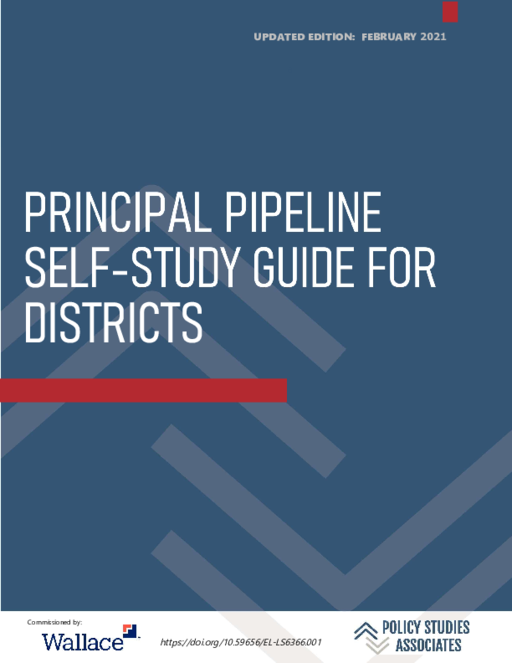Breadcrumb
- Wallace
- Reports
- Principal Pipeline Self-Study Gu...
Principal Pipeline Self-Study Guide for Districts

- Author(s)
- Daniel K. Aladjem, Leslie M Anderson, Derek L. Riley, and Brenda J. Turnbull
- Publisher(s)
- Policy Studies Associates, Inc.
Summary
How we did this
A growing number of districts are creating “pipelines” to prepare and support new principals. Research finds that this is one of the best ways to benefit student achievement. This guide offers help for districts looking to create and operate a principal pipeline, based on the research evidence.
Many districts have already put in place key pipeline elements and want to know how to improve. This guide can help districts reflect on their systems and begin planning improvements. It provides a set of evidence-based indicators for high-quality pipelines. It also provides discussion questions and other guidance to help districts reflect on their pipeline policies, practices, and infrastructure. Districts can rate their own status on each indicator as a step in their decision making and planning. Templates for plans to carry out improvements are also included.
Effective principal pipelines work in seven domains, and each domain supports the others:
- Leader standards
- High-quality pre-service principal preparation
- Selective hiring and placement of principals
- On-the-job evaluation and support
- Principal supervisors
- Leader tracking systems
- Systems and capacity to support and sustain a principal pipeline.
Ninety districts tested an earlier edition of the guide and it was updated based on their experience.
Key Takeaways
- Creating district “pipelines” to prepare and support new principals is one of the most effective ways to benefit student achievement. A rigorous RAND study found that schools in districts with strong pipelines outperformed comparison schools in other districts.
- Many districts have begun to create principal pipelines but want to improve them. This research-based guide can help.
- The guide provides a set of evidence-based indicators for high-quality pipelines. It also provides discussion questions and other guidance to help districts reflect and plan improvements.
- The guide is based on studies of successful principal pipelines. It was also tested by 90 districts and revised based on feedback.

